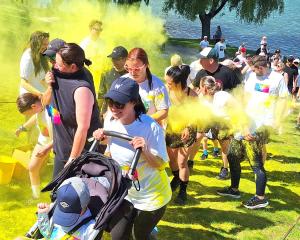
Richard Gibson, an expert witness during the trial of Murray Sarginson, of Athol, said the case was important because it was the first time someone had been prosecuted as an "officer" under the Health and Safety at Work Act 2015.
Sarginson was prosecuted by the Civil Aviation Authority (CAA) after the death of his best friend and business partner, Liam Edwards, after the crash near Lindis Pass on April 30, 2016.
He was sentenced in the Queenstown District Court on Wednesday to four months' community detention, 350 hours' community work and ordered to pay financial penalties totalling $120,000.
The charges carried a maximum penalty of up to five years' prison and/or a $600,000 fine.
Mr Gibson, director of health and safety consultancy Impac, said the directors of larger companies tended to be "far-removed and not actively involved in dealing with risk".
But small business owners actively involved in their operations needed to be constantly assessing and managing risks.
It was often the "Kiwi way" to accept a high level of risk.
"Given the commercial pressures on so many businesses, they often push the boundaries to win the work or get the job done.
"But if you're knowingly breaching the rules or the code, this is the potential consequence."
Agencies like the CAA needed to bring such prosecutions because they served as a deterrent, in this case to helicopter operators.
The sentence seemed to him "about right" given the case's circumstances, and prison would be more likely where there had been previous offending, he said.
At the sentencing, CAA lawyer Stephanie Bishop said while the parties agreed Sarginson's conduct caused the crash, a dispute remained over which factors contributed to his culpability.
He had flown an overloaded aircraft into low cloud, and both those factors had caused "serious risk of death or harm".
However, counsel Garth Gallaway said limited visibility caused by low cloud was the primary cause.
Although a contributing factor, the aircraft's weight was not the direct cause.
In her February decision, Judge Bernadette Farnan said Sarginson failed to carry out a proper weight and balance calculation for the aircraft, and questioned whether he had even carried out a "mental" calculation.
Prosecution witnesses estimated the aircraft weighed 690kg at takeoff, well over the maximum allowed weight of about 620kg.
It remained "significantly overloaded and out of balance" at the time of the crash, Judge Farnan said.
In her victim impact statement, Mr Edwards's widow, Jaimee, said the accident should have been the subject of a coroner's inquiry, not "continuing court investigations" with no positive outcome.
"I believe it was an unfortunate accident, and they do happen."
Mr Gallaway said in all his time practising law he had never seen a restorative justice report in which a victim's family had offered "so much love and support" to a defendant.
"It's clear the family does not blame Mr Sarginson."
Sarginson has continued to fly since the crash.













